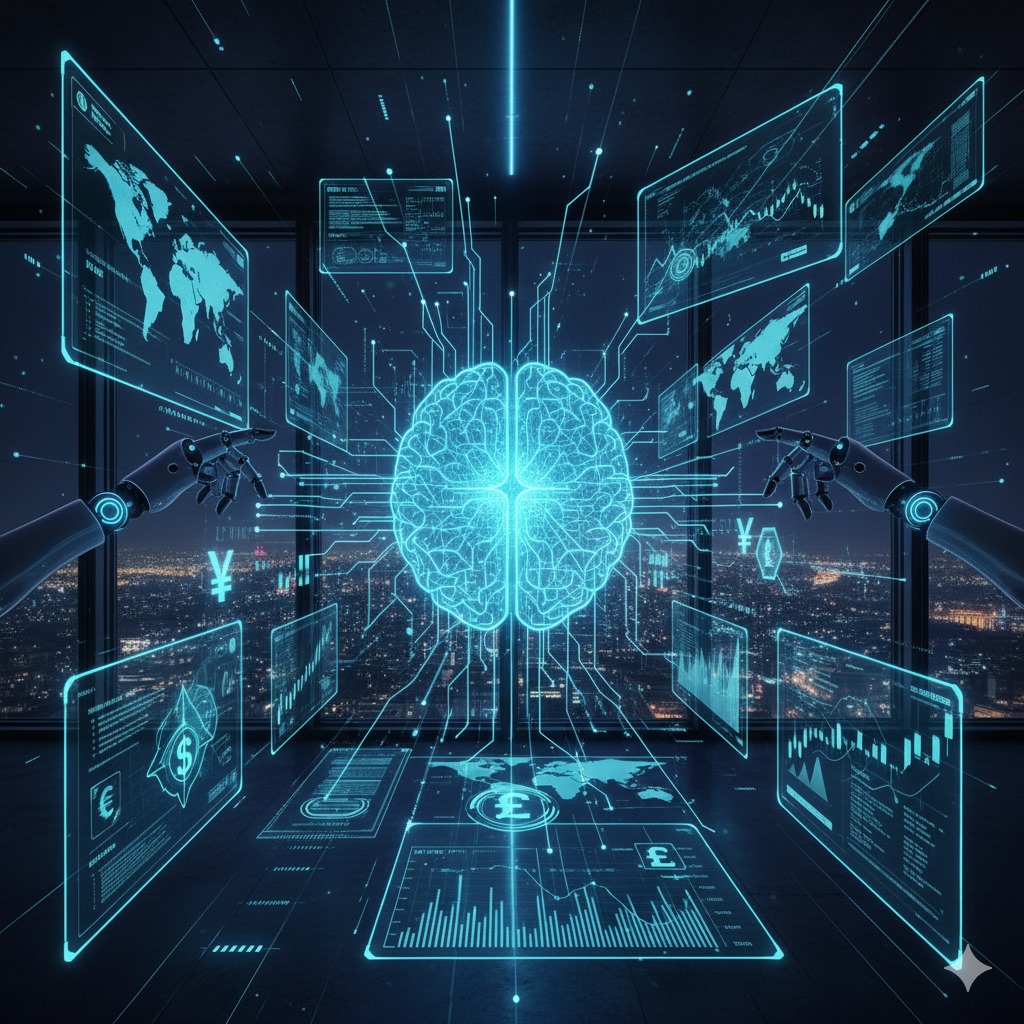
How AI Trading Bots Are Transforming Global Financial Markets

In just a few years, artificial intelligence (AI) has gone from being a buzzword to a transformative force in nearly every sector of the global economy. Nowhere is this more evident than in financial markets. From Wall Street to Nairobi, AI-powered trading bots are rewriting the rules of how capital moves, decisions are made, and risks are managed. What used to be the exclusive domain of elite hedge funds is now trickling down to individual traders, startups, and even small investment firms. The result? A seismic shift in the speed, efficiency, and intelligence of global trading.
What Are AI Trading Bots?
AI trading bots are software programs that use algorithms, data analysis, and machine learning models to execute trades automatically. Unlike human traders who can only process a limited amount of information at once, bots can analyze vast datasets — news articles, market signals, historical patterns, and real-time charts — within seconds. They are designed to spot opportunities, predict price movements, and execute buy or sell orders without hesitation.
Traditional algorithmic trading has existed for decades, but AI bots take it to another level. Instead of relying solely on pre-coded rules, these systems learn from past market data, adjust to new trends, and improve their performance over time. This adaptability is what makes them particularly powerful in volatile markets.
The Rise of AI in Global Finance
Financial markets thrive on speed and information. A few milliseconds can determine whether a trader makes or loses millions. That’s why major investment banks and hedge funds were among the earliest adopters of AI bots. For them, staying ahead of the competition meant leveraging technology that could detect micro-opportunities invisible to the human eye.
Today, however, the adoption is no longer limited to the giants. Cloud-based solutions and subscription-based apps have lowered the barrier of entry, enabling smaller firms and even retail traders to use AI-driven strategies. A day trader in Kenya or India can now deploy tools once exclusive to billion-dollar funds. This democratization of AI trading is one of the most exciting developments in the financial industry.
Key Ways AI Bots Are Transforming Markets
1. Unprecedented Speed and Efficiency
AI bots can execute thousands of trades in a fraction of a second. This speed ensures that traders capture opportunities as they appear, before human participants even react.
2. Data-Driven Decision Making
Markets move on data — economic reports, earnings calls, geopolitical events, and even social media sentiment. AI systems process this flood of information in real time, offering insights that no single analyst could compile.
3. Risk Management
Trading isn’t just about profit; it’s also about managing downside risks. AI bots can monitor exposure across multiple markets, adjust positions instantly, and prevent catastrophic losses by adhering to risk thresholds.
4. Leveling the Playing Field
What was once an arms race between the largest financial institutions has now become accessible to everyday traders. Subscription-based bots and digital platforms allow smaller players to compete globally.
5. Behavior Prediction
By analyzing historical data and current sentiment, AI bots can anticipate market psychology. For example, they can detect panic selling during a downturn or identify early signs of bullish momentum before it becomes mainstream.
Opportunities for Traders and Investors
For those who embrace the technology, AI bots provide opportunities to maximize returns and diversify strategies. Retail investors can automate routine trades, freeing themselves from emotional decision-making. Institutions, on the other hand, can optimize portfolios, hedge risks more effectively, and test multiple scenarios before deploying capital.
There’s also the broader impact on global liquidity. With more automated participants, markets tend to become more liquid, reducing transaction costs and improving efficiency.
The Risks and Challenges
However, AI trading is not without its pitfalls. Bots are only as good as the data they are trained on. If the data is biased, outdated, or incomplete, the outcomes can be disastrous. Additionally, overreliance on automation may lead to “black box” scenarios where traders don’t fully understand how decisions are made.
Market volatility is another factor. In times of extreme uncertainty, AI bots can amplify market swings by executing simultaneous trades at scale. Regulators are already keeping a close eye on this phenomenon to prevent flash crashes and systemic risks.
The Road Ahead
The future of trading will likely be hybrid: a combination of human intuition and machine intelligence. While AI bots excel at speed, pattern recognition, and discipline, humans bring contextual understanding, creativity, and ethical judgment. Together, they can create a more balanced approach to navigating the complexity of global financial markets.
One thing is certain: AI is no longer an experiment. It is already shaping the financial ecosystem, making markets faster, smarter, and more interconnected. For traders, the message is clear: adapt to this technological wave or risk being left behind.
Conclusion
AI trading bots are not just tools; they are catalysts for a new financial era. They are transforming how decisions are made, how risks are managed, and how profits are pursued across global markets. As access to these systems becomes more democratized, the opportunities are vast — but so are the challenges. Traders who can balance innovation with caution will be the true winners in this AI-driven future.

elpais